Via Romea Germanica VI
Collalbo, Italy to Bolzano
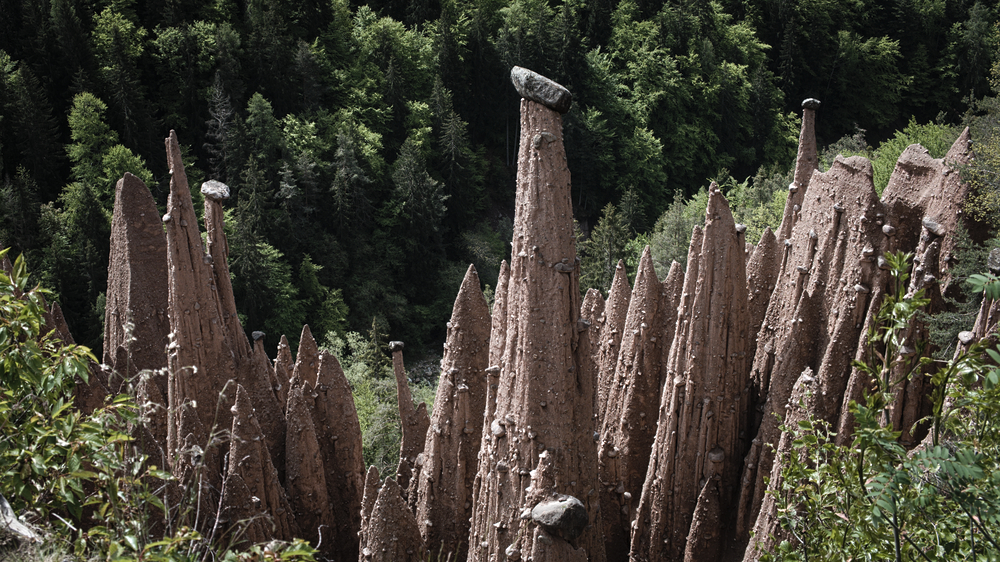
Pyramids of the Earth, Soprabolzano, Italy
“Have you ever seen anything quite so strange?” I asked Mary.
She shook her head, mesmerized by the forest of inverted pink clay cones, each capped with a small stone. These arresting geological formations, a highlight of the hike into Bolzano, Italy, flanked the trail like stone Christmas trees. Or a field of stalagmites, stolen from a nearby cave.
It was amazing, but the spectacle was just beginning.
Welcome to the Peripatetic Historian's multi-part series about hiking the Via Romea Germanica.
If you have stumbled across this installment by accident or a fortuitous Google search, and have no idea what is happening, you might prefer to begin at the start of the series, here: Introduction to the Via Romea Germanica
Otherwise, let's return to our story, already in progress.
We left our agriturismo outside Collalbo around 9:00, and hiked down to the Freud Promenade. In 1911, the founder of psychoanalysis stayed in the area, and he evidently he enjoyed a daily walk. Today, there is a dedicated trail that connects Collalbo to Soprabolzano. A person can stroll from one town to the other, and then ride a small train back to the starting point. To reinforce the connection with Freud, placards line the route, with excerpts from some of the letters he composed while staying here. We are offered gems like: “The Oedipus complex is the nuclear complex of the neuroses, and constitutes the essential part of their content.”
Gives one something to ponder as the miles slip beneath the feet.
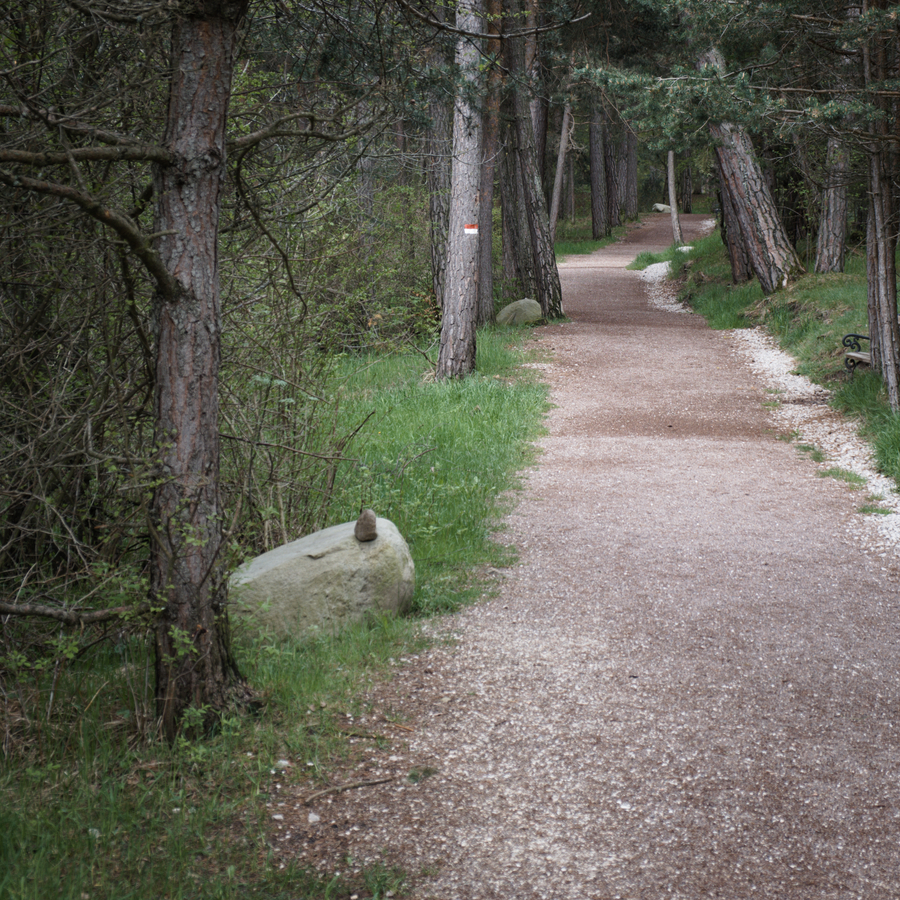
Sharing a footpath with Sigmund Freud.
The mountains were out this morning, offering a view as we walked.
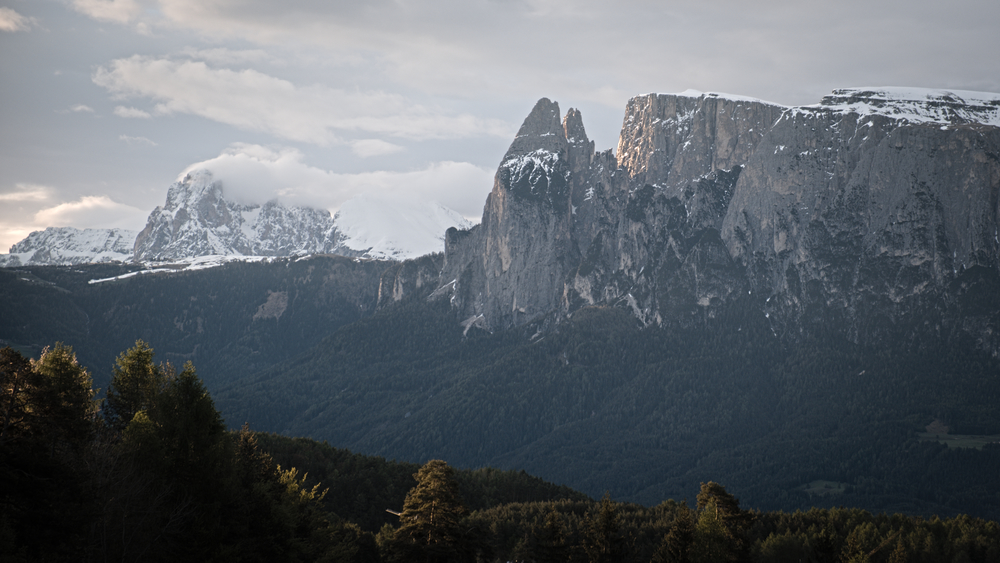
Morning Peaks
Soprabolzano (literally “above Bolzano”) sits on the southern edge of the Altopiano. Bolzano — today’s destination — sits roughly 1,000 meters lower. Somehow we needed to get from Soprabolzano to Bolzano.
There is a perfectly practical and viable way of doing this, and I see that some of my predecessors in the Via Romea blogging business have employed it: a cable car that whisks a person down the mountainside in twelve minutes. Moreover, as a parting gift, the owner of our agriturismo had given us a card that would have made the trip free. A free ride on a cable car, viewing the sights flying beneath us, or a long, foot-cracking, knee-busting 1,000 meter descent. Which should we choose?
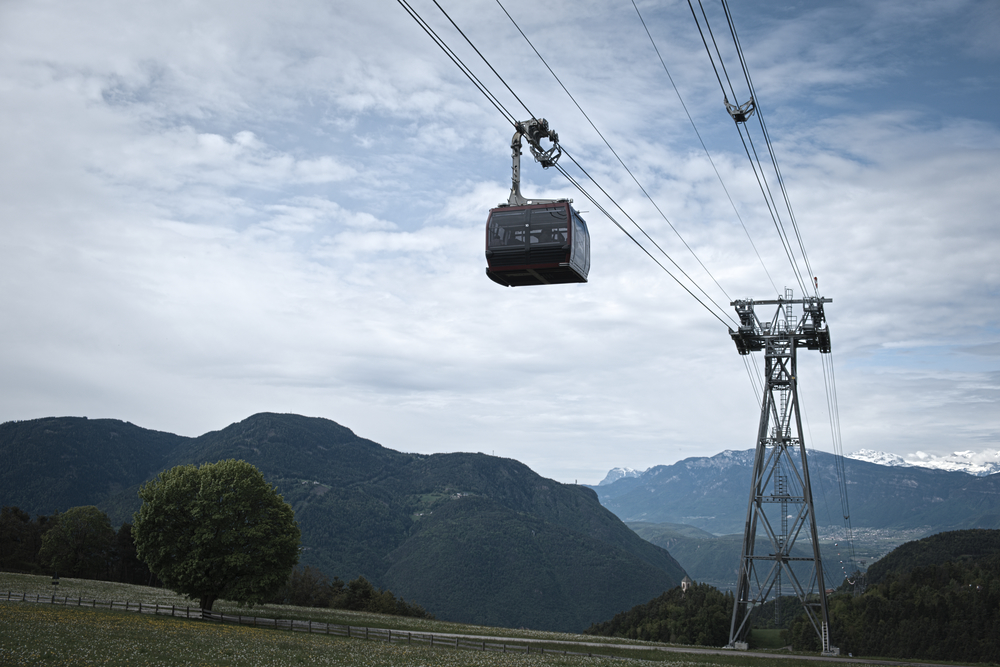
The fast way off the Altopiano
Exactly right. The day doesn’t feel complete unless we’ve strained ankles and knees with a grueling descent.
Descents are harder than ascents. When climbing you are lifting the combined weight of pack and body with each step. It adds up and becomes exhausting. Downhill, however, you are checking the momentum generated by each plunging step. Your feet, ankles, and knees must catch your weight thousands of times, and that is exhausting. Couple that with the steep slopes and uncertain footing that characterize these mountains, and it becomes clear that this is no stroll to the grocery store. I would not recommend this hike if it was wet, or, even worse, snowing.
(Take the cable car; twelve minutes end to end).
We began our descent on another segment of the Kaiserweg (see Via Romea Germanica V for details of this path). As was true yesterday, these rocks are fairly hazardous, an ankle waiting to be turned with every step.
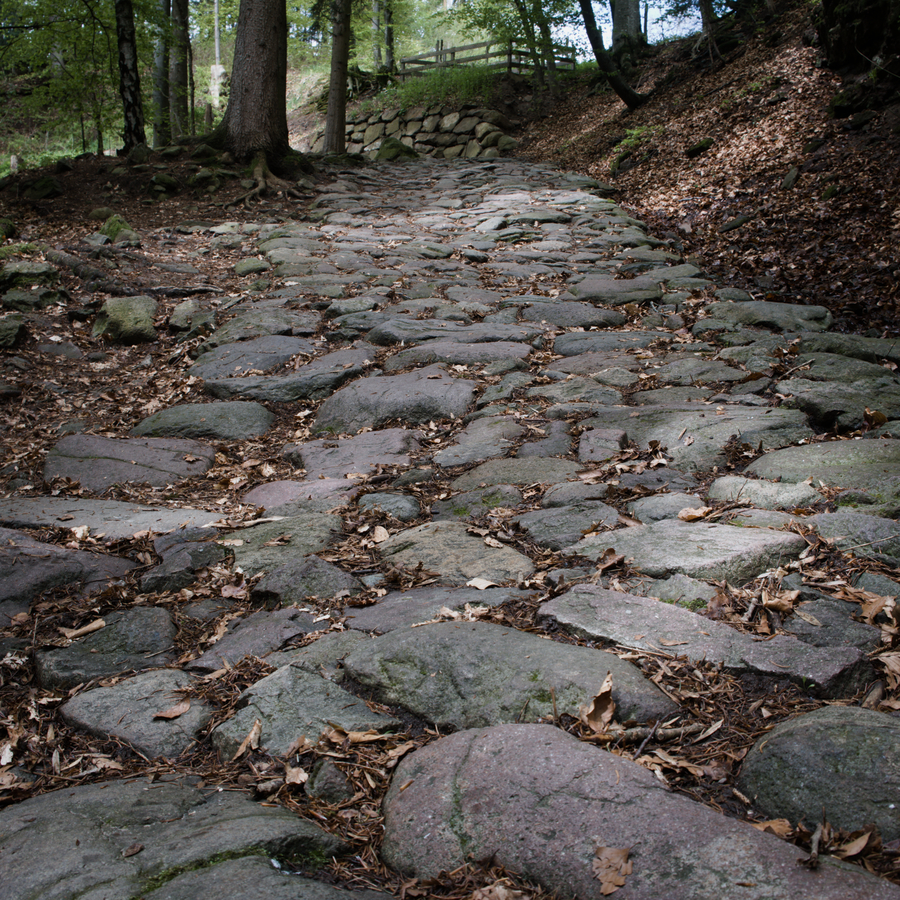
The Kaiserweg
On the other hand, the hard slog over this difficult terrain did lead us to the Pyramids of the Earth, the surrealistic geological formation featured at the beginning of this post. We wouldn’t have seen these odd clay mounds from the tram.
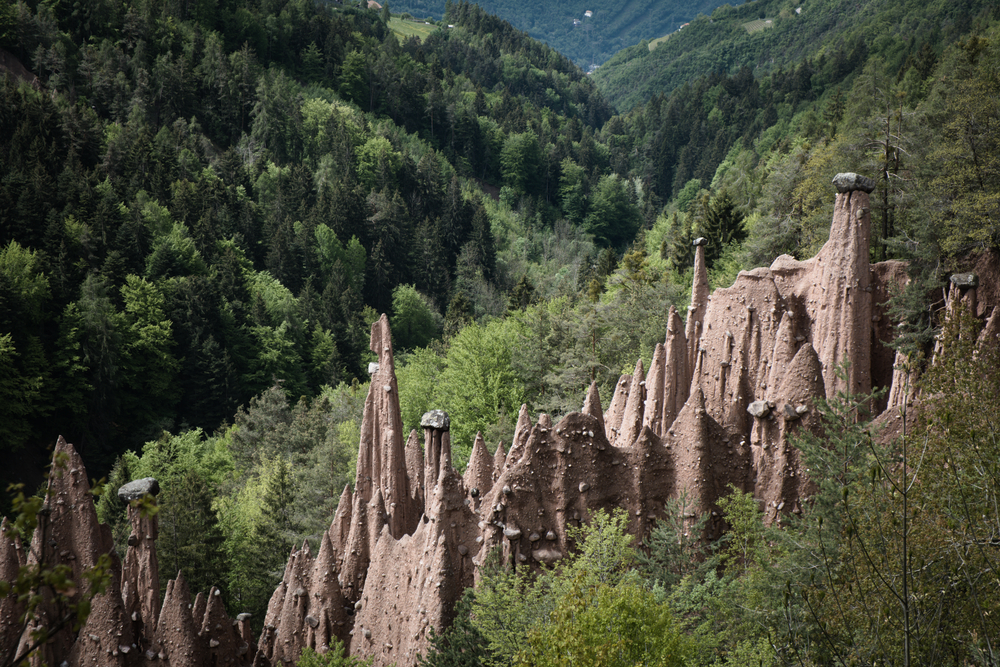
Pyramids of the Earth
The Pyramids of the Earth were formed when rain eroded a bed of clay. Over the centuries, water carried off loose particles. As precipitation slowly washed the clay away, a pillar formed beneath harder rocks embedded in the clay. Each rock served as an umbrella for the clay beneath it, and consequently, erosion carved a spike beneath each rock. The stones sit like pillar saints, perched atop their clay columns. They are much taller than one would think possible, with some dwarfing the nearby trees. This area, between Collalbo and Bolzano, has some of the best Earth Pyramids in the world.
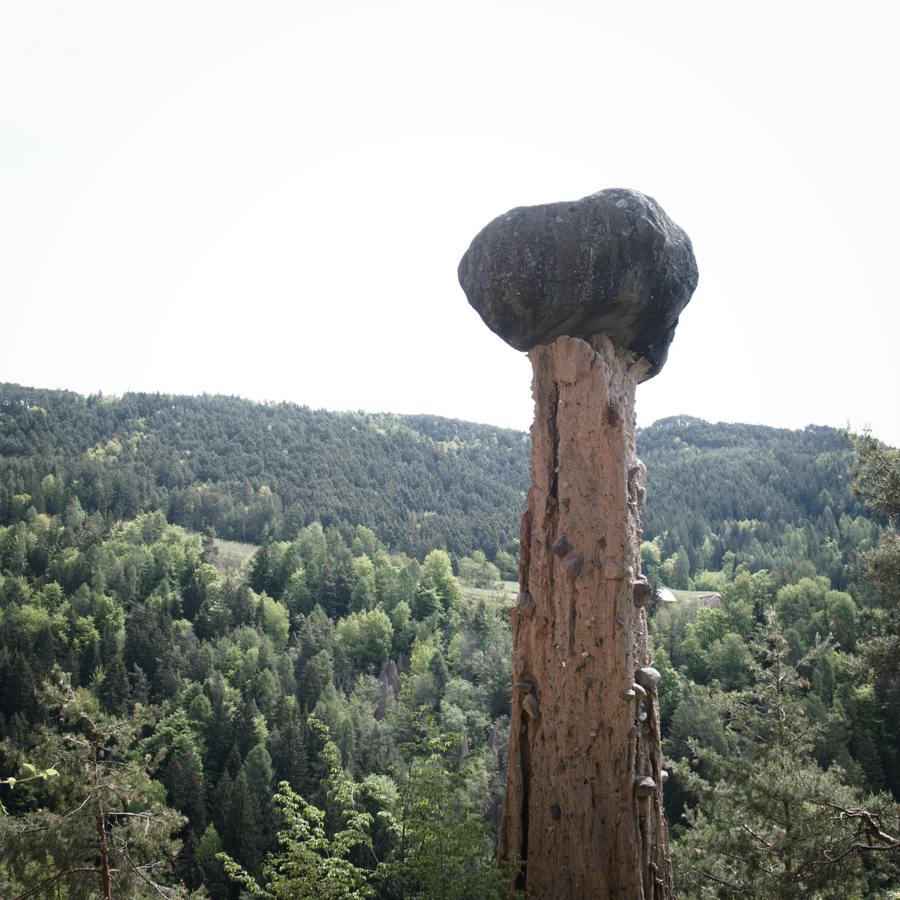
Rock and Earth Pillar
They are utterly fantastic in appearance, like something from a science fiction movie set. One can see the Earth Pyramids while walking into Collalbo, but they are far away, across a valley. The formations below Soprabolzano are harder to get to, but they are closer to the vantage point and well worth the effort.
When we reached the first viewing point, we noted a large collection of llamas tied to the fence. A group of people were having a picnic, and it became evident that they had ridden the llamas down. That’s one way to get down the hill (and back up again).
We turned our attention back to the downhill plunge. The trail ran through forests and along the slopes of hills that offered excellent views.
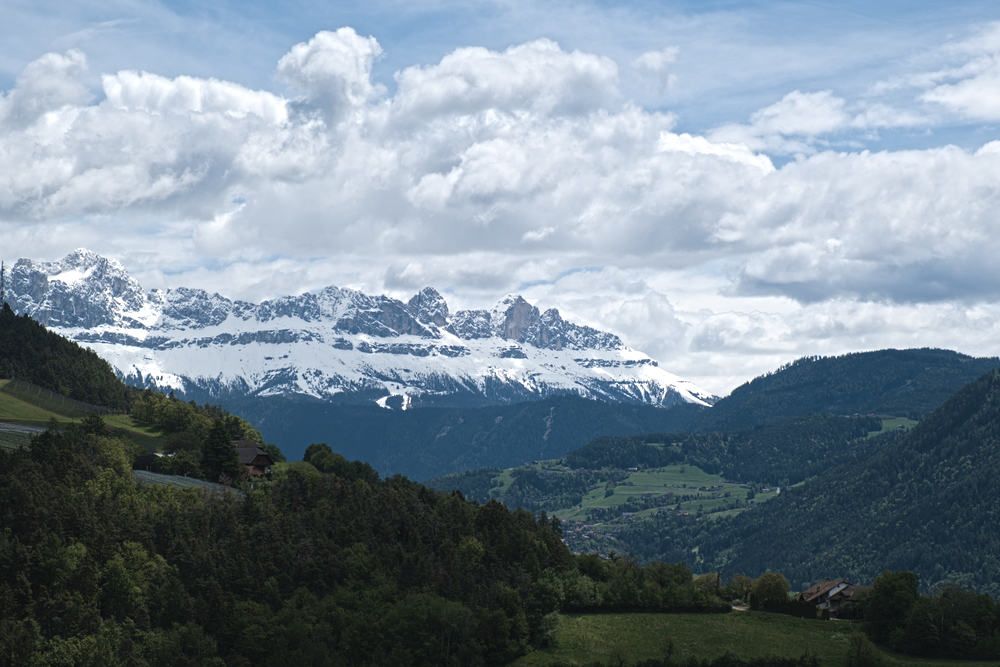
Sunshine lights nearby mountains.
The last stage of the trip was a sharp three kilometer plunge downhill. And here I must note that I have a bone to pick with some of these trail signs. I find them unhelpful. To begin with, the signs measure the distance in hours/minutes to the destination. But what is the standard? If the sign claims that Bolzano is an hour away, is that an hour for an Olympic trail runner, fast moving teenagers, or an old, overly cautious hiker like me? I think distance, rather than time, would be more helpful.
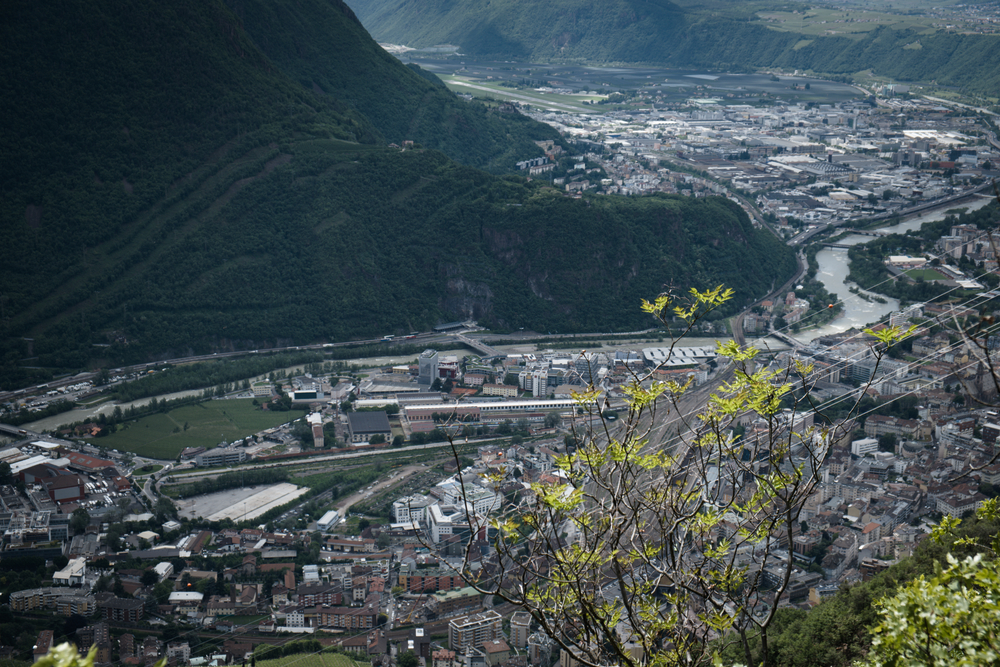
Bolzano looks close (but it really isn't).
We passed a sign that claimed Bolzano was one hour away. Fine. We crept down the steep rock- and root-strewn trails for twenty minutes and reached another sign which stated, rather improbably, that Bolzano was still one hour away. Twenty minutes of walking and not a minute closer? Something was definitely wrong.
As we lurched over the rocks and stumled over the roots, a woman came running past us, flying on fleet feet down the trail. Incredible! One missed step and she would break an ankle, leg, or worse. Of course she probably reached Bolzano an hour before us.
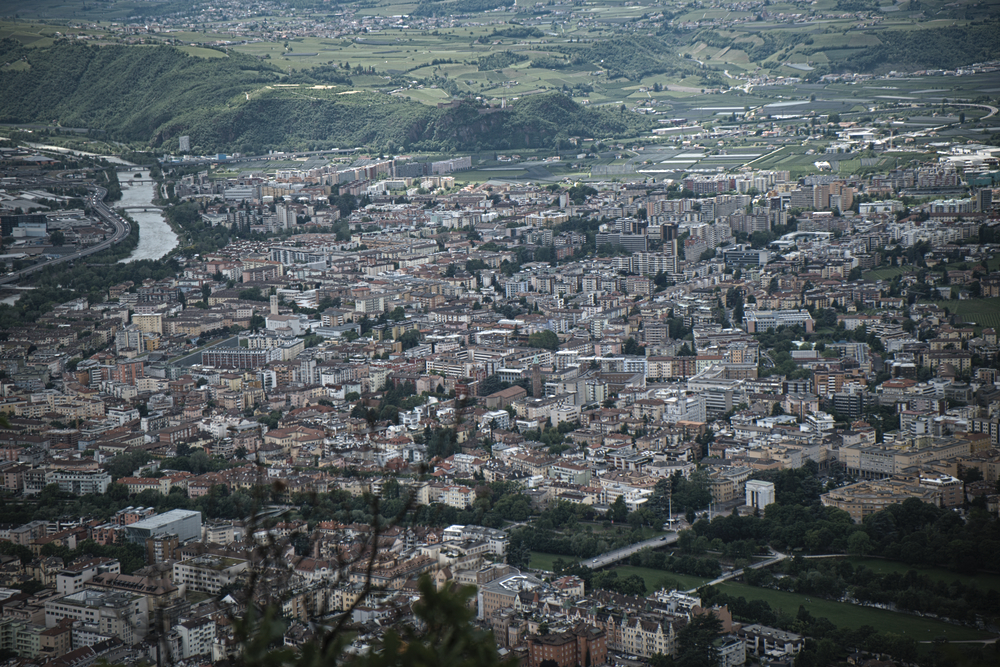
An hour later and Bolzano appears no closer.
We continued our painful descent. After about a week, we passed a sign that noted Bolzano was only twenty minutes further. Hooray!
Fifteen minutes later, we passed a sign that said Bolzano was still twenty minutes away. Desperate and disinclined to trust the signs, we continued to make our way down the never-ending hill. Finally, the path turned to brick, and a few minutes later we reached the first houses of the city. Another leg of the trip in the books.
Bolzano is supposed to be a fascinating town, home of such attractions as Otzi, the famous Neolithic ice man. We intend to spend an extra day here, to explore the city and rest our trail-cracked feet.
Today's distance: 15.76 KM; Total distance: 113.76 KM
If you are enjoying this series, why not subscribe to Richard's monthly newsletter, What's New in Old News? The Peripatetic Historian is on the road, roaming the world and compiling fresh adventures. Don't miss out. Click here to join the legions of above-average readers who have already subscribed.